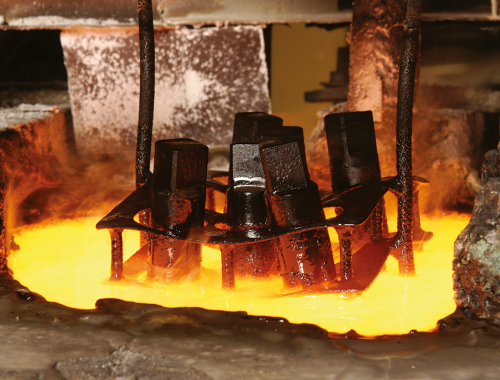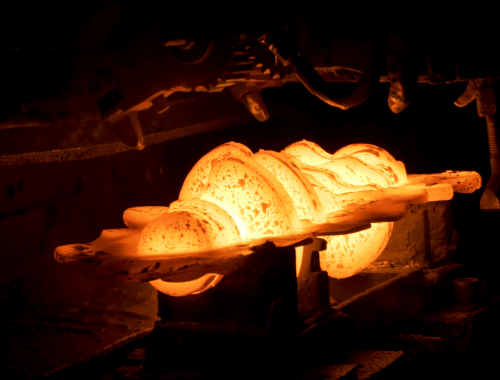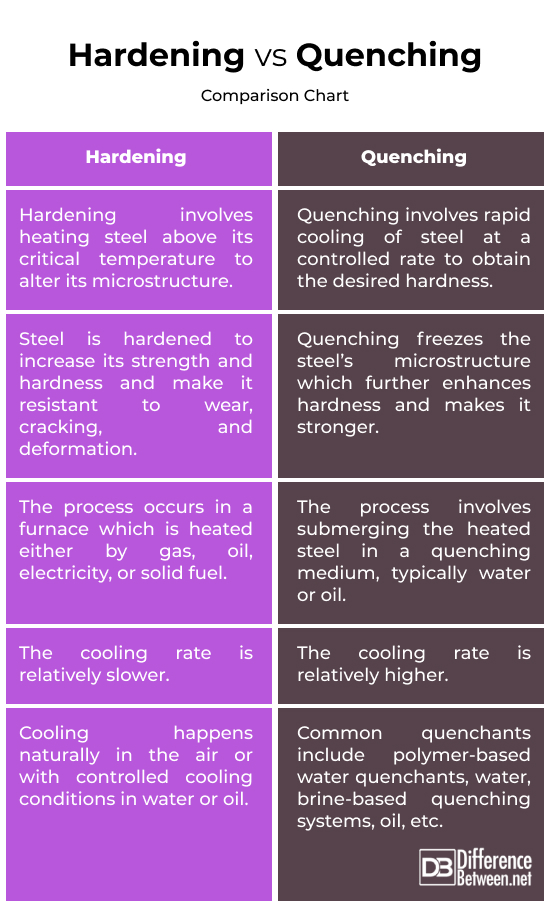Difference Between Hardening and Quenching
Both are heat treatment processes used to alter and modify the mechanical properties of steel to make it stronger and more durable. When steel is heated at higher temperatures, the structure of the steel goes through a significant change at the atomic level, thereby improving its resistance to wear, cracking and deformation, and its tensile strength.
It’s a common process used in various industrial applications, such as the manufacturing of tools, gears, machine parts, automotive parts, construction equipment, etc. While the heat treatment process involves both hardening and quenching of steel, there is a subtle difference between the two. In this article, we’ll talk about the two processes in detail and give a comprehensive hardening vs. quenching breakdown, highlighting their key differences.

Hardening
Hardening is a controlled heating process in which high carbon steel is heated above its critical transformation temperature long enough for molecular transformation to occur, then it’s allowed to cool down slowly. This causes the structure to transform into a much harder, more durable material. The process usually takes place in a furnace which is heated either by gas, oil, electricity, or solid fuel.
All parts of the metal are heated at the same rate and to the same temperature. A uniform heat gives steel the required hardness and produces the best product. Steel is essentially an alloy of carbon and iron, and heating it to critical temperatures causes carbon to go into a solid solution, then comes the cooling part which is essentially called quenching.

Quenching
Quenching is the cooling of steel at a controlled rate to obtain the desired microstructure and hardness. It’s done by submerging the heated steel in a quenching medium, typically water, oil, or a specialized polymer solution. Greater hardness is achieved from quenching in salt brine and less in oil than is obtained by the use of water. This is because of the differences in the heat-dissipating qualities of these materials.
The choice of quenching medium depends on the composition of the steel and desired properties. If done correctly, it changes the steel’s molecular structure from ferrite to martensite and gives the steel its desired hardness. Hardened materials are tempered to improve their toughness and dimensional stability. The cooling rate is primarily affected by many factors such as quenchant viscosity, agitation, and convection rate.
Difference between Hardening and Quenching
Process
– The hardening process involves heating steel above its critical transformation temperature but below its melting temperature to alter its microstructure. This process is typically carried out in a furnace which is heated either by gas, oil, electricity, or solid fuel. Quenching is the rapid cooling of steel at a controlled rate to obtain the desired microstructure and hardness. This involves submerging the heated steel in a quenching medium, typically water or oil, to change its structure from ferrite to martensite.
Cooling Rate
– Hardening is essentially a measure of the cooling rate at which martensite will form followed by quenching. During hardening, the cooling rate is relatively slower. A higher cooling rate reduces the toughness and ductility of steel. A slower cooling rate allows austenite to transform into bainite or pearlite, depending on specific steel. Quenching, on the other hand, involves rapid cooling which causes the austenite to transform quickly into martensite, resulting in a durable and more brittle structure.
Medium
– Hardening occurs via heat treatment of medium and high carbon steels in a furnace or by induction, and the cooling happens naturally in air or with controlled cooling conditions in different media such as water or oil. The various quenchants used have different cooling characteristics in cooling rates. Low-carbon steel requires high cooling rates, whereas high-alloy steel could have slow cooling rates. Common quenchants include polymer-based water quenchants, water, brine-based quenching systems, oil, etc.
Hardening vs. Quenching: Comparison Chart

Summary
Hardening is a controlled heating of steel to get a desired combination of hardness, strength, and toughness. Hardening involves heating steel to a temperature where the iron phase transforms from ferrite to austenite, eventually changing its microstructure. This process is then followed by quenching, which is further hardening of steel to achieve the desired strength and hardness. Quenching involves subjecting the steel to a temperature above its recrystallization temperature and rapidly cooling it to change its molecular structure.
FAQs
What is the process of both quenching of hardening?
Hardening involves heating steel to a temperature where the iron phase transforms from ferrite to austenite and alters its microstructure. Quenching is the rapid cooling of steel at a controlled rate to obtain the desired microstructure and hardness.
What is hardening and quenching of steel?
Hardening is a controlled heating of steel to get a desired combination of hardness, strength, and toughness, whereas quenching helps steel to reach the martensitic phase and achieve full hardness.
What is the purpose of quench hardening?
Steel is hardened to increase its strength and hardness and make it resistant to wear, cracking, and deformation. It’s further quenched to freeze the steel’s microstructure, which increases its strength and hardness. The rate of quenching can be adjusted to get the desired properties or results.
What is the difference between quench and age hardening?
Age hardening is a heat treatment technique used to impart high-yield strength to metals by heating them above their critical temperature and then allowing them to cool slowly. This temperature must be maintained for several hours. Quenching is a very rapid cooling process that sometimes requires aging.
- Difference Between Caucus and Primary - June 18, 2024
- Difference Between PPO and POS - May 30, 2024
- Difference Between RFID and NFC - May 28, 2024
Search DifferenceBetween.net :
Leave a Response
References :
[0]Haimbaugh, Richard E. Practical Induction Heat Treating, Second Edition. Ohio, United States: ASM International, 2015. Print
[1]“Metal Hardening / Metal Quenching / Metal Tempering.“ Metlab, metlabheattreat.com/metal-hardening-metal-quenching-metal-tempering.html.
[2]Markham, Edward R. Hardening and Tempering. Read Books Ltd., 2017. Print
